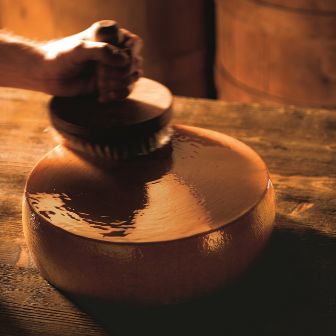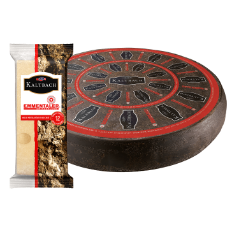What's the purpose of salt in cheese?
Sometimes it's the simple questions that yield the most interesting answers. First, the basics: Salt has to do with microflora, with disinfection and with sensory aspects.
How does the salt actually get into the cheese and what function does it serve? The first question is easy to answer; the second is a bit more complicated. After the curd has been shaped and pressed, the fresh wheels are placed in a salt bath – a basin filled with a saturated salt solution.
The Dead Sea is also a saturated salt solution. So the salt baths at our sites where cheese is made would actually make great places to swim. But of course that's not allowed.

Various reasons
Immersing and keeping the cheese in the salt bath has three functions. The first step is to extract some water from the cheese on its outer layer – in the form of whey. This makes the rind drier and more stable.
Secondly, this process lightly disinfects the rind and prepares it for what's to come later on.
Like during the dry-ageing of Emmentaler cheese, where the effect of the salt ensures that nothing else will grow on it.
In the smear-ripening process, only specific and desirable microflora should grow on the cheese, which are added along with the smear.
Thirdly, part of the salt naturally penetrates the cheese itself and contributes to the typical sensory impression created by the cheese. The whole process also depends on the ratio between the surface area and volume.
The big cheeses like the salt bath
Large cheeses with a small surface-to-volume ratio stay in the salt bath for longer than those with a large ratio. Moreover, cheeses with a low water content likewise need longer than softcheeses.
Mystery of the white spots
That's why Sbrinz bathes in the salt bath for days while Camembert only takes a quick dunk for a few hours. What’s more: The small, crystal-like spots that can be seen in the holes of ripe Emmentaler cheese are not salt crystals. These white spots usually consist of tyrosine, an amino acid.
Proteins, the main component of cheese, consist of chained amino acids. These proteins are split during the maturing process. When a cheese is matured for a long period of time, for example, individual amino acids may be re-released and, in the case of tyrosine, crystallise as white spots in the cheese.
Any other questions?





